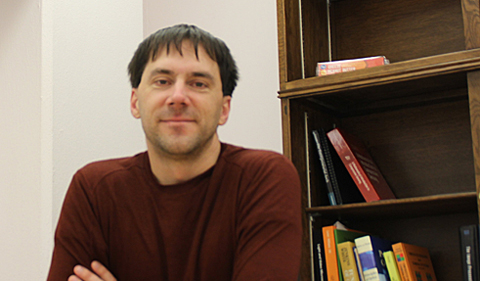
Dr. Anthony Stender
Dr. Anthony Stender, Assistant Professor of Chemistry and Biochemistry, was quoted in an article headlined “Luminescent nanoparticles leave a glowing fingerprint” in Chemical & Engineering News.
A new fingerprinting technique that uses long-lived luminescent nanoparticles provides sharp images of otherwise invisible prints (Anal. Chem. 2017, DOI: 10.1021/acs.analchem.7b03003). The method offers better resolution than standard fingerprinting for forensic investigation, the researchers say.
When collecting fingerprints at crime scenes, investigators choose from a handful of reagents to reveal the patterns deposited on surfaces by skin oils and proteins. They dust or spray surfaces with black carbon-based powder, organic dyes, or fluorescent molecules depending on what will maximize the prints’ visibility on a given surface, whether porous, nonporous, dark, or multicolored. To enhance the contrast of fingerprints against surfaces, researchers would like to stain them with molecules or metallic nanoparticles that glow when light is shined on them. But some surfaces—including metal and plastic—themselves fluoresce under ultraviolet light, which can obscure the details of a glowing print….
Anthony S. Stender, an analytical chemist at Ohio University, says these nanoparticles may be useful to detect prints on surfaces with visually complicated patterns or strong natural fluorescence. But he notes that it can be challenging to get new protocols adopted for widespread use in forensic labs in the U.S. Yuan says a forensic research institute in Beijing has visited her lab and is interested in testing the particles as an investigative tool.



















Comments